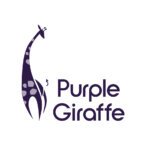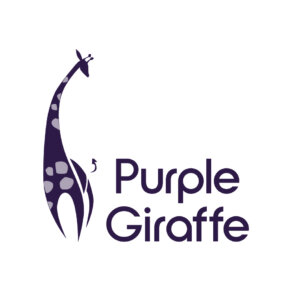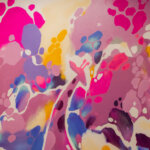Why labeling and packaging in the wine game has become so important.
Wine consumers are a mixed bag. Some are highly educated and very knowledgeable about the wine industry and the offerings available. Others are not and only seek a drop that tastes good and doesn’t break the bank. Everybody else sits between these two extremes.
Some consumers shop on price, some on brand, others on vintage, region and year, to name a few. Some are traditional and attracted to classic looking labeling and packaging. Others attracted to colour and clean contemporary design. To add further complexity, often the same consumer will change which group they sit in depending on the buying occasion.
It’s all very hard to wrap your head around.
The good news is that all wine consumers are sensitive and responsive to wine labels and packaging to some degree and in most circumstances.
The scene
The wine marketplace itself is a crowded and rowdy place – similar to a packed cellar door or a wine bar on a Friday night. There are lots of offerings, all competing for attention, and the clever, attractive ones are the ones that get noticed.
Some wine consumers play it safe and stick to the brands they know or that have been recommended to them by a trusted source. However, even in these instances the packaging still must be recognisable and engaging.
The reality is a wine bottle sits on a shelf with countless others and must be seen and bought to even get opened. As we alluded to in our title, often it’s the consumer eye, or the mind, that makes the initial choice, and dictates if the wine will be bought, taken home and enjoyed.
In this dating game between wine products and drinking consumers, it’s the packaging and labeling that largely plays the role of match-maker and can be the difference between success and failure.
In this article we outline what is wine packaging, what are the current trends that are influencing labeling and packaging, and what is likely to lead to success in this now very diverse, highly creative, interesting and tricky area of wine marketing.
What is wine packaging and labeling and why is it important?
The term wine packaging is broad. Wine packaging and labelling can take many forms including bottles, casks, and the now more modern wine-in-a-can. However, it’s the traditional format of bottle and label that has become popular with modern wine drinkers, and therefore employed by the vast majority of wineries. With this in mind it is this aspect of wine labelling and packaging on which this article will concentrate.
The wine label
The wine label (back and front) on a wine bottle has been recognised by in a study conducted by the Barat Group[1] as one of the most important forms of communication between wine marketers and wine consumers. These labels must feature all of the information required by the consumer whilst also capturing their attention upon the shelf. It is vital that this small-in-size piece of marketing collateral speaks volumes directly to the desired target market. The main purpose of the front label is to catch the consumer’s interest, whereas the back label is used to provide more detail about the wine or winery.
How packaging influences purchasing consumer behaviour
Wine is often described as a high-involvement purchase and can be associated with a level of personal reputation and risk. With this in mind, consumers are interested, enjoy this purchase process and as a result they often take their time. The other point to note is that most wine consumers undertake this research in-store and are heavily motivated by visual cues. A small percentage of wine consumers are very knowledgeable about what’s on offer, but the majority, although they very much enjoy wine, are not wine experts. Things like brand name, variety, region, price and the look of packaging are all analysed on-the-spot and a decision is made based on a combined assessment of each of these aspects, all of which are provided on the bottle label. Clever labels are specifically designed with their desired target market in mind. Some shout feel good fun at their audience, others smack of conservative class and confer status, others make promises of organic deliciousness. It’s this marketing messaging that speaks to the wine consumer, helping them to make their choice. This is why packaging and labelling are so important to sales success.
Trends that are affecting wine labelling and packaging
With a broader range of wine consumers than ever before and a general loosening up of todays retail environment, wine packaging and labelling has become much more diverse. Traditional labels still firmly have their place, but room is being made for literally hundreds of new kids on the block. Bolder label artwork, clever and humorous brand names, eye-catching graphics or simple, modernist design can now all be found upon the shelf. These new offerings are finding much success in the marketplace due to the following trends affecting the wine industry.
The industry is as competitive as it has ever been: Never before has the demand for wine been so high. However, in response to this, never before has their been so many wine offerings available to satisfy this demand. Traditional and alternative varieties from new and established wineries are all competing for a piece of this action. Each wine label must act to help each offering stand out from the crowd and appeal to their target market, attracting both new customers and retaining old faithfuls. More than ever before, new and established wineries are using packaging and labelling to get noticed.
More diversity in wine label designs: As the market grows and consumers join the fray, wine bottle labels are becoming an increasingly essential tool for initially positioning and then establishing a brands personality and attracting customers in their desired target market. Many years ago, before the turn of the century, wine labels were less unique, mostly featuring certain colours and fonts and full of words making them actually quite hard to differentiate from one another. In today’s modern and more diverse wine marketplace, there are new rules. Wine labels can feature all sorts of colour, humour, creative wine names, stories and untraditional label materials.
Wine marketing has changed: The online world has made information about wine and brands much more available and consumers are becoming more knowledgeable about their choices. Social media platforms have also provided vast communities in which to showcase brands in a non-traditional but very aspirational and influential format.
Technology has raised the bar: As in all things, the technology used to create, print and design wine labels and packaging has become more sophisticated, allowing more scope for what is possible. As a result, those involved in this area of the wine game can push the boundaries of what is possible to attract attention. Labels that feature internally embossed glass, QR codes, embedded intelligent chips or boast augmented reality stories are now all available. However, with technology comes cost. Producers face the battle of trying to capitalie of the technology and stay within their budgets.
The world is becoming more accessible and wine needs to be noticed on-line: It is not unheard of for wine producers and marketers to travel the world and to gain exposure to new technologies, design styles and ideas in general. As the global marketplace become more accessible due to the World Wide Web and online retail environment, it is becoming less necessary to even travel to research these trends as they can be found catalogued online. All consumers now have the opportunity to shop from the convenience of their own home. Therefore, now not only does a wine label need to stand out on the shelf, but also in an online retail environment.
Millennial wine drinkers: The millennial generation (typically considered to be between the ages of 18 to 29 or 19 to 34) has been a driving force of change as more of them become of drinking age. This group of consumers have buying power and wine companies have changed their aesthetic to capture their imagination, and their dollars. To appeal to this market segment wine companies have started using wine labels and packaging which is more comical, modern, creative, and aspirational.
Consumers are interested in the story behind the wine: With so many wines available, the story behind the wine has become just as important as the visual appeal of the wine’s label and packaging, and should be accessible from it. This story makes the wine unique and allows the consumer to connect with it. Consumers are becoming more astute with the products they buy and like to know that what they’re buying is of good value and relates to their personal values and aspirations. In addition to this, authentic stories provide the wine offering greater credibility in the consumers mind. Therefore the wine’s story assists a consumer to make a purchase decision, and can possibly lead to brand trust and loyalty in the future.
The impact of design and colour on product positioning: The style and colour of imagery used on wine labels can vary greatly between price points and can greatly influence a customer in-store. For example, in general lower-priced wines tend to use illustrative and organic imagery whilst higher-end wines rely on purely typographic and ornamental labels. Similarly with colour, black and navy is popular with high-end wines, to reinforce the idea of a premium brand. Gold is prevalent through all price points, although more so with premium brands, whereas red and pink occur quite frequently amongst cheaper wines – possibly to appeal to young women.
In conclusion
Visual impact plays an increasingly important role in wine labelling and packaging. An attractive look can act to attract new and keep existing clients who are sensitive to aesthetics. As a result it is important for every winery to invest in their packaging look in order to differentiate their wine in what has become a very competitive market. A successful and consistent design, that reflects the brand and the story behind it, will speak to the desired target market and have a positive impact on the perception of the product, the brand and sales. With so many factors to consider, it’s important that a wine company creates labels and packaging that have synergy with its brand and target markets.
Image credit: https://wine.lovetoknow.com/wiki/Free_Wine_Label_Software
Blogs, articles and journals that have been read or referenced in this blog are detailed below:
- http://uno.net.au/news/wine-packging/
- https://www.consolidatedlabel.com/label-articles/label-packaging-trends-wine-industry/
- https://www.smitherspira.com/resources/2018/march/5-technology-developments-for-label-printing
- https://www.labelandnarrowweb.com/issues/2015-1/view_features/wine-label-evolution/
- https://esource.dbs.ie/bitstream/handle/10788/3228/msc_girard_m_2016.pdf?sequence=1&isAllowed=y







